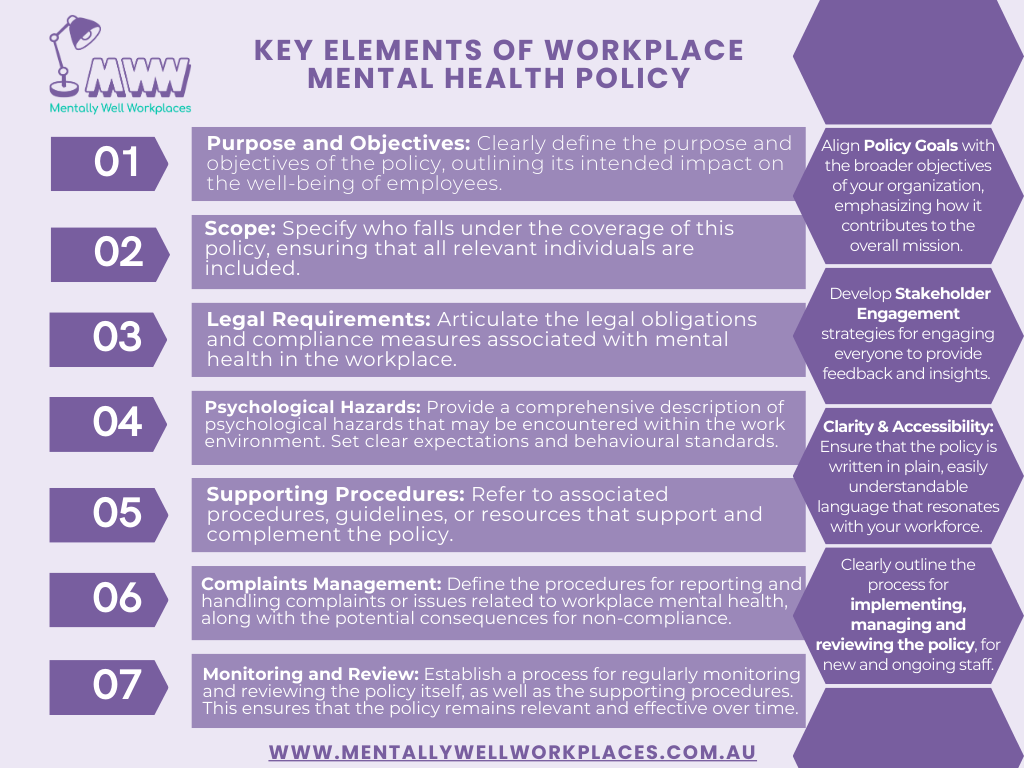[DOWNLOAD RESOURCE]: Key Elements of a good Workplace Mental Health Policy

Workplace policies help set expectations across the business. They clearly define what psychological hazards are and what you will do to manage them.
A mental health policy serves as a guiding document outlining the roles and responsibilities of both employees and leaders/directors within your organisation. It is essential that this policy is customised to suit the specific needs and nuances of your workplace.
At a minimum, a workplace mental health policy should encompass the following key elements:
1. Purpose and Objectives
Clearly define the purpose and objectives of the policy, outlining its intended impact on the well-being of employees.
2. Scope
Specify who falls under the coverage of this policy, ensuring that all relevant individuals are included.
3. Legal Requirements
Articulate the legal obligations and compliance measures associated with mental health in the workplace.
4. Psychological Hazards
Provide a comprehensive description of psychological hazards that may be encountered within the work environment. Set clear expectations and behavioural standards, differentiating between acceptable and unacceptable conduct.
5. Supporting Procedures
Refer to associated procedures, guidelines, or resources that support and complement the policy.
6. Complaints Management
Define the procedures for reporting and handling complaints or issues related to workplace mental health, along with the potential consequences for non-compliance.
7. Monitoring and Review
Establish a structured process for regularly monitoring and reviewing the policy itself, as well as the supporting procedures. This ensures that the policy remains relevant and effective over time.

In addition, consider the following factors when crafting your mental health policy:
- Policy Goals: Align the policy’s goals with the broader objectives of your organization, emphasizing how it contributes to the overall mission.
- Stakeholder Engagement: Develop strategies for engaging all stakeholders within the workplace, allowing every individual to provide feedback and insights.
- Clarity and Accessibility: Ensure that the policy is written in plain, easily understandable language and tailored to resonate with your workforce.
- Implementation: Outline the steps and measures for implementing the policy, including its integration into the onboarding process for new employees.
- Policy Maintenance: Detail the approach to managing, reviewing, and updating the policy, particularly when changes occur in relevant laws or regulations.
By addressing these components, your workplace can establish a robust mental health policy that promotes a supportive and nurturing environment for all employees while meeting the legal obligations.
Download this tipsheet as a PDF.
Looking for help to get started with workplace mental health and wellbeing?
Find out more about our work and get in touch – www.mentallywellworkplaces.com.au
If you want more information and resources on workplace mental health and wellbeing, join our mailing list.
Find us on social media: we are on Facebook, Instagram and LinkedIn.



































Responses